Electrification Chokepoints in Nevada Make the Case for a Holistic Perspective on Decarbonization


Sunny skies, geothermal hotspots, mineral resources and plenty of federal land for lease have all made Nevada a focus of activity in the electrification movement. The state has also emerged as a key testing ground for President Joe Biden’s ambitious decarbonization plans for the nation. The question is where to locate massive new energy and mining operations. Some Nevadans are saying: not here.
Solar power for electrification
Nevada is no stranger to utility-scale solar power. Ten years ago, the Obama-era Department of Energy (DOE) promoted the state as a proving ground for massive concentrating solar power plants, which use sprawling fields of special mirrors to collect and focus solar energy.
Large arrays of solar panels have sprouted across the state, in addition to smaller rooftop installations.
Altogether, the Solar Energy Industries Association counts 3,903.8 megawatts of installed solar in Nevada, giving the state the high-ranking position of sixth place in the nation. That’s quite a feat for a state that only ranks 35th in population.
Nevada does rank seventh in land mass, which indicates that there is plenty of room for the solar industry to grow. A full 63 percent of that land is owned by the federal government, raising the potential for energy production leases. However, solar industry players involved with federal land within the state must work with and around tribal rights, nature conservation and recreational interests.
Recently, the California-based solar developer Arevia Power formally withdrew plans to build a new 850-megawatt solar array on federal land. The so-named Battle Born Solar Project would have taken up 9,000 acres on Mormon Mesa in Clark County, and it would have been the largest such array in the state, if built.
Opponents made their case partly on an economic basis, arguing that the new solar power plant would block a longstanding, tourist-attracting motorcycle rally from using the area. It would also curtail the use of ATVs.
From a conservation perspective, opposition from those quarters is somewhat ironic, considering the damage incurred by raceways and off-road vehicles, in addition to impacts related to spectators and vendors, as well as the contribution of vehicles to air pollution.
Nevertheless, that is the end of the Battle Born Solar Power Plant. However, it is not the end of Arevia Power, which is still assisting in the development of the 690 megawatt Gemini solar project, located in the same general area north of Las Vegas.
Renewable energy transmission lines now under fire
Renewable energy transmission lines have also emerged as another key area of contention.
The utility NV Energy has laid ambitious plans for the two-part Greenlink transmission project in southern Nevada. Greenlink West will travel 350 miles from Las Vegas to Yerington, NV. Greenlink North will go from Yerington to Ely (shown above).
The twin projects create “a renewable energy highway that allows access to Nevada’s resource-rich renewable energy zones, containing about 5,000 megawatts of undeveloped renewable resources, that could not previously be developed due to the lack of necessary transmission infrastructure,” NV Energy explains.
Among the beneficiaries will be Reno, which is attracting attention as a tech and industry center, thanks in part to its role as host to a Tesla Motors Gigafactory. Apple, Google and Switch also have footprints there, and the tech giants have made renewable energy access a centerpiece of their investments.
A key selling point is that the new line will enable Nevada to exploit more of its solar and geothermal resources, in order to counterbalance its relatively low potential for hydro and wind power.
Opponents argue that reclaiming abandoned mines, rooftops and other pre-developed sites are more sustainable pathways for electrification, in contrast to plowing through virgin territory that includes wildlife habitat, cultural sites and public recreation areas.
As of press time, the opposition has been characterized as coming from small but vocal groups, and the transmission project appears to be on track. However, considering the ten-year battle over transmission lines intended for renewable energy in other states, a successful conclusion to the permitting process is not yet assured.
Electric vehicles and the lithium question
Another critical area in the electrification field is the availability of lithium for rechargeable batteries. Nevada has become a battleground in that area, too.
“Before breaking ground on an open-pit lithium mine that would process ore in Humboldt County for 46 years, Lithium Nevada plans to dig up and cart away Native American artifacts — and possibly burials — at the site frequented by Nevada tribes for millennia,” reads the opening lines of a long form news article on one such battle, as reported by Frank X. Mullen of the Reno News Review.
Members of the Fort McDermitt Paiute and Shoshone tribes have organized to stop the project, which would damage hundreds of cultural resource sites and dozens of properties eligible for the National Register of Historic Places.
The Trump administration rushed approval for the project through during the former president’s last days in office. In March the Biden administration filed suit to stop it, citing a failure to conform to environmental review processes.
While that battle rages on in court, the Biden administration has also taken steps against another lithium mine proposed for Nevada, on account of habitat populated by a rare wildflower.
What about green hydrogen for low-impact electrification?
There is no easy way out of the complex thicket of electrification impacts. However, new technologies could help decentralize access to renewable energy, increase the use of buildings and other pre-developed sites for energy generation, and alleviate the need for large centralized power plants and new transmission lines.
The DOE has been promoting distributed energy resources as the cornerstone of a more sustainable, reliable, and resilient electricity grid. Part of the emphasis is on perovskite solar cells and other new solar technologies that reduce costs, and which could be used in a wider range of applications compared to conventional solar panels.
In addition, the DOE is also promoting new technologies for lithium extraction from brine at geothermal sites. Though not impact-free, these facilities would disturb far less surface area than the open pit lithium mines in use today.
Called “direct lithium extraction” (DLE), the technology has been cited as a significant development by the DOE’s National Renewable Energy Laboratory (NREL).
In a report issued earlier this month, the lab noted that “DLE could be a game-changing extraction method, potentially delivering 10 times the current U.S. lithium demand from California’s Salton Sea known geothermal area alone.”
Improvements in energy storage technology can also come into play, by enabling factories and other facilities to maximize the output from on site or nearby renewable energy resources, instead of pushing the demand for new transmission lines.
That’s where the newly emerging green hydrogen field comes in. As both an energy storage medium and a means of generating zero emission electricity, green hydrogen can be produced, stored and used on site. It can also be transported on the nation’s existing network of roads and waterways for use elsewhere. The vast network of existing fossil energy pipelines could also potentially provide fuel for transportation.
Leading manufacturers are already introducing new gas turbines that can transition from natural gas to green hydrogen, which further raises the potential for re-using existing power plants and other industrial sites for zero emission electricity production.
Finally, the transportation sector is already bending to embrace green hydrogen as a pathway for electrification. Manufacturers of cars and virtually every other type of motorized device — from SUVs and trucks to locomotives, airplanes and watercraft — are beginning to introduce hydrogen fuel cells to their roster.
Considering the rapid improvements in lithium-ion battery technology, it is unlikely that fuel cells will replace batteries for vehicle electrification. However, fuel cells could become a significant part of the transportation electrification movement.
Together with an increased emphasis on mass transportation, bicycle-friendly streets and walkable communities, fuel cell vehicles could help relieve pressure on the lithium supply chain.
In the meantime, business leaders who promote electrification need to make a greater effort to emphasize grid decentralization and alternative technologies that can help promote a more holistic perspective on sustainability.
Image credit: Britta Preusse/Unsplash
The Eviction Moratorium Is Over. Now What?
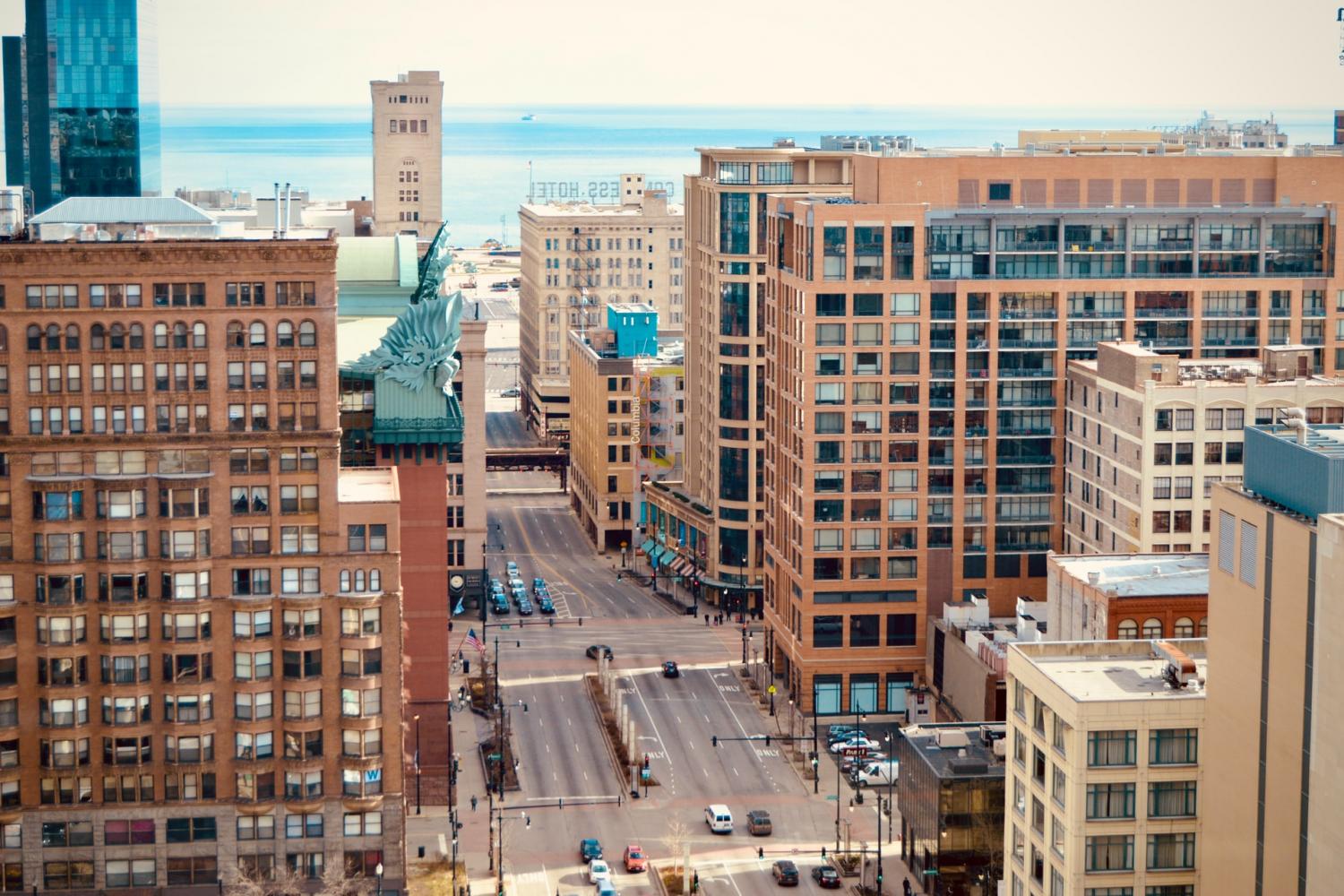

UPDATE: Since the publishing of this article, the CDC has issued an eviction moratorium through October 3 for areas of the country experiencing high rates of COVID-19 transmission. The ban on evictions will cover around 90 percent of the U.S. population.
Despite last-minute efforts to extend the expiring eviction moratorium, Congress failed to reach an agreement before the July 31 deadline, punctuating unknown housing fates for the millions of American households struggling with rental payments. While it’s unclear exactly how many renters face eviction, a survey from the Census Bureau revealed as many as 11 million adult renters are “seriously delinquent” on rent.
A brief timeline of the eviction moratorium saga
The Centers for Disease Control and Prevention (CDC) first issued an eviction moratorium from September 2020, responding to calls from former President Donald Trump to use its authority after the congressional moratorium expired last summer. The CDC’s eviction moratorium was intended to only last through the end of 2020, but it has since been extended several times as the pandemic’s hardships continue to weigh heavy on renters.
The CDC announced in June its intentions to extend the moratorium one last time, with the final extension set to expire July 31. A Supreme Court case brought on in late June by a group of southern landlords and real estate companies challenged the CDC’s authority to issue, and then continuously extend, the moratorium. A 5-4 vote, swayed largely by Justice Brett Kavanaugh, validated the CDC’s power and upheld the moratorium’s end date of July 31.
Editor's note: Be sure to subscribe to our Brands Taking Stands newsletter, which comes out every Wednesday.
The vote all but guaranteed a congressional showdown for another extension, with Kavanaugh writing any further moratorium would need “clear and specific congressional authorization,” thus tying the Joe Biden administration’s hands.
And that brings us to August: While many landlords are rejoicing in the lapse of the moratorium, renters are fretting over an uncertain future, and U.S. representatives are enjoying a month recess away from the humid, sticky D.C. summers.
What does this mean for renters and homeowners?
The congressional and CDC moratoriums were a saving grace for millions of Americans struggling with the economic ramifications of the pandemic. At the dog days of the pandemic, when housing became a form of healthcare with stay-at-home orders, evictions would have forced former renters and homeowners into particularly vulnerable situations, like homelessness or crowding in with family members and friends.
Check out past TriplePundit coverage that highlights vulnerability among the homeless and struggling tenants amid the COVID-19 pandemic.
Princeton University’s Eviction Lab credits the CDC moratorium with keeping as many as 2 million people housed since September. But even with the moratorium in place, landlords were busy filing eviction notices. In the six states and 31 cities where the Eviction Lab tracks data, landlords have filed for 451,772 evictions, including 7,238 in the week prior to the July 31 moratorium deadline.
Again, those numbers reflect only six, mostly low-population states (Connecticut, Delaware, Indiana, Minnesota, Missouri and New Mexico) and excludes major U.S. cities like Chicago, D.C., Los Angeles and San Francisco, among many, many others. The limited set reveals the challenges of collecting such data. The U.S. government, as well as many state governments, do not collect eviction records, instead leaving it to counties and local jurisdictions who often lack the sophisticated infrastructure to appropriately track such data.
Princeton University’s Eviction Lab has a host of truly remarkable tools. Play around with them and see the data for yourself here.
In a household pulse survey issued by the U.S. Census Bureau in early July, around 3.6 million people in the U.S. said they face eviction in the next two months. That fear may soon become a reality as the moratorium is lifted.
The ending of the moratorium comes as a number of factors may exacerbate the situation for renters and homeowners on the fritz: the delta coronavirus variant, rising rental prices and a slow release of federal aid.
Despite the vaccine roll-out, COVID-19 rates are on the rise once again as the delta variant spreads across the states. The CDC recently walked back its guidance that vaccinated persons cannot spread the virus, stoking revised policies around mask wearing in indoor settings. The AP reports that evictions will likely be worse in the south, where tenant protections are weaker and vaccination rates are lower, especially among communities of color: not the ideal recipe for an eviction amid rising COVID rates.
The moratorium expiration also coincides with rising prices in housing, for both rentals and homeownership. High housing prices have driven prospective homebuyers to delay their purchases, leading to a more crowded rental market. An apartment list report published in late June shows that the median apartment rent rose 9.2 percent in the first half of 2021, tripling the pre-pandemic rate. And there’s no reason to believe that trend won’t continue to worsen as experts predict millennials (who aren’t graduating from renters to homebuyers) are expected to continue powering this demand.
The last factor, the slow release of federal aid, is bottlenecking stimulus money set aside for rental assistance. Of the nearly $47 billion dedicated to rental assistance in the stimulus bill, only $3 billion has been distributed. With the moratorium expired, time is running out for the federal government to proactively distribute these funds directly to vulnerable tenants and to states who will oversee $21.5 billion of the pool.
What landlords are saying
There is a group that stands to gain from the expiration of the eviction moratorium: landlords. The ban on evictions has been particularly difficult for small, individual landlords, whose investments have been shattered by an inconsistency of monthly payments from renters. Their struggles are similar to the ones of small business owners since the pandemic started in early 2020. As they are still required to pay their property taxes to local governments, landlords whose tenants are late on rent payments have been given little to no options.
The money owed to landlords is significant. Research from the Aspen Institute puts the money owed to landlords at $20 billion, while a joint report from Jim Parrot of the Urban Institute and Mark Zandi of the Moody Institute suggest the total owed is much higher, $57 billion. The report from Zandi and Parrot indicate that the average renter is $5,600 behind on rent, translating to four months of delinquent payments. With the eviction ban lifted, landlords can start executing evictions and recouping funds erased from the pandemic.
It remains to be seen what the exact impact of the end of the eviction moratorium will be. Perhaps it will be the fire that ignites a swifter reaction from the government to disburse the $44 billion dedicated to rental assistance still in their coffers. After all, renters and landlords alike would stand to benefit from the government disbursal. For landlords, it represents the chance to finally secure back payments and renew a coveted revenue stream. For tenants, it’s a roof over their head while they reset from a year of financial and personal losses.
Image credit: Andra C Taylor Jr/Unsplash
New ESG Regulation Out of Europe Redefines Investment Risk


Over the last year, as U.S. financial regulators have sent signal after signal that greater environmental, social and governance (ESG) and climate risk oversight is on the near horizon, the European Union has been busy actually codifying its sustainability goals. By mandating that financial advisors and managers in the EU approach climate and sustainability as a fundamental investment risk, the new ESG regulations will transform the global standard for risk management.
What is the Sustainable Finance Disclosure Regulation?
The EU’s Sustainable Finance Disclosure Regulation (SFDR), which came into effect in March, is designed to drive capital toward sustainably-oriented investments. It is widely considered the broadest regulatory action in sustainable finance to date. And for U.S. firms trying to keep up with the blistering pace of ESG-related transformations within the financial sector, the SFDR could offer some clarity.
The SFDR was initiated by the European Commission as part of a broad EU action plan, announced in 2018, to encourage sustainable investing throughout the EU financial system and to put ESG issues on-par with traditional financial risk indicators. It is broad in its scope covering nearly all asset managers, investment product providers, and financial advisors that operate within the EU. The first phase of reporting standards is already in effect and increasingly detailed reporting obligations will phase in over the coming months and years.
What do the regulations require of EU asset managers and financial advisors?
Under the SFDR, all EU asset managers (whether or not they are focused on sustainability) are now asked to publicly disclose: their approach to incorporating sustainability considerations their investment decisions; any “adverse impacts'' investments may have on environmental or social factors; and, any sustainability risks that may impact investment performance.
Starting in January, financial products marketed as having ESG characteristics or a “sustainable investment” objective will face additional reporting requirements intended to discourage greenwashing.
Financial advisors will now be required to counsel clients on the sustainability implications of their investments -- including the potential impact (whether negative or positive) on the financial performance of their investments.
The SFDR will act as a mandate for participants in financial markets to “do no harm” to society and the environment while also safeguarding investors from exposure to undue risk stemming from poor ESG positioning of their investments. The regulations are written to make sustainability considerations a routine addition to existing financial disclosure and risk-management requirements.
The regulations follow a “comply or explain” approach, wherein managers and advisors who choose not to comply with the disclosure rules must instead provide a clear explanation of why sustainability considerations are not relevant. This effectively shifts the default assumption to one of material relevance, placing consideration of ESG issues squarely within standard risk-management frameworks. Under this paradigm, a lack of consideration of ESG risks (for example, the risk to a company’s profitability from the imposition of a carbon-tax or a supply chain disruption resulting from a flood event) could be considered a breach of fiduciary responsibilities.
What does this mean for ESG - and U.S. firms?
The SFDR has an impact on U.S. firms through one direct channel: Non-EU managers and advisors that market financial products into the EU or provide advice to EU firms are also covered. These are typically large players in the industry. BlackRock, for example, has made its SFDR statements public through its website. In a memo released in March, the firm reported that nearly $400 billion in assets fall under the scope of SFDR.
For most U.S. managers and advisors, the SFDR will have a more indirect effect: catalyzing a new standard for ESG risk accountability. The reputational costs of ignoring the sustainability aspects of risk-management and the potential flight of capital toward firms that are working within this new paradigm will now need to be considered.
The idea that sustainability issues could impact investment fiduciaries in the U.S. is not new. In the last decade, policy groups and academics have been proposing that investment fiduciary standards be revised (or reinterpreted) to include sustainability considerations. The argument they make is that the best long-term interests for the majority of household investors cannot be met without consideration of environmental and social well-being – a short-term focus on purely financial goals is no longer adequate.
The EU regulations will drive greater reporting of ESG risk data
One of the most transformative aspects of the SFDR may be its impact on corporate reporting. Large asset managers, already hungry for more quantitative ESG data, are now calling for disclosures that are both mandatory and consistent with international reporting frameworks.
To meet this demand, third party data providers such as MSCI, Refinitiv, Sustainalytics, Moody’s and S&P Global are now tailoring products toward the data-points needed for compliance with the SFDR.
Taken together, the regulatory and cultural trends driving corporate ESG and climate-risk disclosure will ultimately set a new normal for best-in-class risk reporting both at the corporate and portfolio level. U.S. managers and advisors who don’t start integrating these data will likely find themselves out-of-step with evolving risk-management standards.
Image credit: Porapak Apichodilok/Pexels
Countries Invest in Research Aligned with SDGs, But Are They Going Far Enough?


A report of how research and development is progressing in nearly 200 countries revealed that research, particularly in low- and lower middle-income countries, are increasingly aligning with the United Nations’ Sustainable Development Goals (SDGs) that are related to combating climate change.
The 700-page report titled “The Race Against Time for Smarter Development“ was published in July 2021 by UNESCO and measured 56 topics across eight of the sustainability-related SDGs (SDGs 2, 3, 6, 7, 9, 13, 14, 15). The trends showcased countries and governments commitment to investing in research around digital and green transitions, in areas ranging from wastewater treatment to greenhouse gas emissions to desalination.
Globally, the output of scientific publishing was 21 percent higher in 2019 than in 2015. The increase is even more impressive when zeroing in on low- and lower middle-income countries, which witnessed a 71 percent increase in scientific output. While China is fueling much of this growth for low- and lower middle-income countries, the collective advances in research on climate-related SDGs is encouraging.
In Sub-Saharan Africa, for example, tech hubs and incubators are growing rapidly. Across the continent there are now 744 dedicated tech hubs, with thirteen African countries exceeding 20 hubs. There has also been an impressive increase in the number of people classified as full-time researchers worldwide. In the span of just five years, the world added one million researchers, representing a rate three times faster than that of global population growth. Research publications conducted by lower middle-income countries also skyrocketed on breakthrough renewable energy topics like photovoltaics (from 6.2 percent to 21.2 percent) and biofuels and biomass (from 7.6 percent to 21.6 percent).
That leads to one takeaway that investors can take from this UNESCO report: Many of these emerging economies are ripe for additional investments in clean energy technologies as many of them are “leapfrogging” over the infrastructure required for conventional energy sources such as oil and natural gas.
Still, G20 countries handily set the pace for such research worldwide. Together, they account for 90 percent of the world’s researchers, research spending and scientific publications. Despite the encouraging research trends in countries and governments investing in digital and green transitions, eight out of ten countries spend less than 1 percent of their GDP on research. This underfunding of research is particularly prominent in low- and lower middle-income countries, who continue to depend on foreign outfits for technology.
[Click here to view the government expenditure on research from 1996 to 2018. While the data pulses year over year depending on the country, the general trends show research spending as a portion of government spending is increasing.]
Perhaps more troubling, the UNESCO publication also highlights challenges it faced in accurately reporting the progress of achieving the SDGs. Despite commitments to monitor their progress in research intensity, countries have actually become less apt to share their data. In fact, 30 fewer countries reported their numbers for domestic research in 2019 than in 2015.
Alarmingly, the United Nations’ Environment Program published a report in 2019 revealing that 68 percent of climate-related SDG indicators cannot be measured due to a lack of data. While it shouldn’t negate the renewed strides of governments, policymakers and researchers across the world to increase their investments in technology and green research, the UNESCO report aptly notes: “One cannot monitor what one cannot measure.”
The importance of conducting research is not to be understated. The number of climate-related research publications, researchers focused on photovoltaics, or articles published about battery efficiency may not make for the splashiest, most click-worthy headline. But the research is laying the foundation for future systems change. The trend of governments aligning their research priorities with SDGs should lead to tangible results in accomplishing ambitious goals, whether by the 2030 deadline or beyond.
There’s also a serious business case to be made for governments investing in research. Look no further than China, who was responsible for 44 percent of the growth in worldwide research expenditure. They’re commitment to research, and apparent return on investment as seen in its meteoric rise to the number two world economy by measure of GDP, is something other countries may look to as a model.
Image credit: Fateme Alaie/Unsplash
The Chesapeake Bay Region Is a Public-Private Conservation Success Story


Photo: Chincoteague, Virginia, a Chesapeake Bay town home to about 3,000 people that shares the name of the island on which it is located on Virginia’s Eastern Shore. Chincoteague has long been popular with visitors for its nature, historic sites and the ponies that move between there and nearby Assateague. Image credit: Sara Cottle/Unsplash
Many would agree that climate change is the most prominent problem we face today, and that we probably ever faced as a species. To win this battle, more than 120 countries have committed to achieve net-zero greenhouse gas emissions by 2050. However, avoiding a systemic collapse is not enough, and states alone might not be able to solve the problem.
According to Timothy Male, Executive Director at the Environmental Policy Innovation Center, achieving a true sustainable growth means solving a diverse range of issues including the rampant biodiversity loss, increasing land and water pollution and environmental injustice.
A promising path to direct and accelerate these efforts lies in policy-building initiatives that create financial incentives for private conservation efforts, Male explained in a Private Conservation Finance report.
And there is no better place to find evidence in favor of this path than in the Chesapeake Bay.
The Chesapeake Bay case
The Chesapeake Bay, the largest estuary in the U.S., shared by Maryland, Pennsylvania, Virginia, and Washington D.C., is a holiday destination chosen by many nature lovers, hikers and campers every year. But what some people do not know is that it’s one of the most productive and biodiverse bodies of water in the world, with more than 250 fish species, 300 migratory bird and 3,600 species of animals and plants.
Given its size and biodiversity, the conservation of the Chesapeake Bay is key for both the ecology and the economy of the states that encompass it. “To successfully protect places such as this one, conservation programs must adjust to our modern understanding of human behavior and incentives,” explained Male in an interview with TriplePundit. “In other words, laws and regulations need to make conservation programs attractive to investors.”
Indeed, private capital investment has shown to have many benefits, including significantly improving the cost-effectiveness of public funding, supporting innovation to a greater degree than public funds and facilitating greater lending capacity so that restoration happens much faster.
The Chesapeake Bay case showcases the potential of boosting private conservation finance. According to a recent Private Conservation Finance report, no other region in the world supports more private finance-dependent cooperation. This is not by chance. At least within the context of water quality and related work, Chesapeake Bay states already have some of the most favorable conditions for direct investment, market-based or finance-backed approaches in the country.
Measures taken could be grouped into three categories: a well-defined regulatory framework explaining what the specific pollution reduction targets to achieve are; standardized quantification tools explaining how to estimate and translate outcomes into those targets; and strong public spending. As a result of this combination of actions, more than $4.2 billion of private investment has been deployed over the past 20 years to benefit Chesapeake conservation goals.
Chesapeake Bay states are eyeing the big prize
A combination of programs to attract private investment are getting more traction in the Chesapeake states.
The first two types of programs, and where investment has focused the most so far, are investments in transferable tax credits that reward forest and farm preservation, and green banks to help borrowers secure better loan terms and credit access.
An example of green banks is the wetland and stream mitigation banking market, considered one of the largest environmental markets in the world. This program consists of an organization protecting and restoring polluted water resources, and later selling those protected resources to companies that need a permit or want to voluntarily offset their impact.
Other programs to attract investment include state revolving funds (SRFs) that provide low-cost federal resources to help fund water infrastructure projects, and environmental impact bonds that provide investor capital as a loan to public agencies, paid back at a rate that depends on the success of projects.
Finally, there are pay-for-success contracts, where the state or agency pays for environmental outcomes as a finished product instead of paying up front for each step in the process, leaving up to the private sector to carry out the project.
This variety of programs the states surrounding the Chesapeake Bay can center their focus on different alternatives. For example, Pennsylvania has strong state revolving fund programs aimed at attracting investments for water quality and forest protection projects.
Meanwhile, Maryland has leveraged public-private collaboration and the power of technology, by partnering with The Nature Conservancy, Walmart, and water technology company OptiRTC29 to take existing stormwater ponds owned by Walmart and install sensors that allow pond water levels to be dropped based on estimated storm events and current storage capacity.
“We hope the model of public-private and interagency cooperation established here can be replicated throughout the rest of the Bay watershed and across the country to meet the growing demand for cost-effective infrastructure upgrades like these,” asserted Craig Holland, CEO of TNC/Opti Development Partners LLC.
When asked which of all the alternative programs being used right now holds more promise, Male pointed to pay-for-success programs: “Pay for success contracts can boost up to 50 percent on cost savings. They incentive parties to do things faster and more cost-efficient, creating a standard for performance and accountability.”
However, as Male recently explained in a public statement, there is still room for improvement. Investment is still held back by outdated state and federal laws, approval processes, and government procurement strategies.
Setting an example: Combining forces for conservation
“If we look at environmental problems carefully, there are actually solvable problem,” Male explained to 3p. “Conservation should be able to explain what success looks like in quantitative terms so that the private sector can understand how much time is going to take and how much is going to cost.”
“The other part is having public agencies be comfortable with the idea of risk and sharing responsibilities with the private sector,” he added. “Right now, we have a public agency responsible for design, another one for construction and another one for maintenance; each contract demanding thousands of public funds and taking months to be written. This creates a mismatch of incentives and miscommunication.”
The Chesapeake Bay Foundation has estimated the economic benefits of a restored Chesapeake Bay are more than $5 billion per year in recreation, property value, health and job creation. But there is still a funding gap of around $3 billion.
If the Chesapeake Bay region and indeed the entire planet is going to cover the gap in green funding that is greatly needed, the amount of private investment in conservation and restoration needs to increase significantly. As Joel Dunn, president and CEO of the Chesapeake Conservancy, concluded: “The future of our Chesapeake Bay, and indeed our planet, depends on it.”
Cisco Networking Academy Launches Free IT Education to Empower All People With Career Possibilities


People are wired with an innate desire to learn. Yet, while desire may be evenly distributed, access to education tools, resources, and opportunity is not. At Cisco Networking Academy, we believe that all people, regardless of where they live, their means, age, gender, or background, deserve equal access to education and the opportunity to pursue meaningful work that provides for themselves, their families, and contributes to the betterment of society.
For 23 years, Cisco Networking Academy has provided a bridge to career opportunities to more than 12.6 million people in 180 countries. Working with nearly 12,000 affiliated academies and more than 650 employers around the world, we have proven what’s possible when companies, non-profits, governments, and academic institutions come together for a shared purpose – empowering all people with career opportunities. Today, Cisco Networking Academy is the largest and longest-running corporate social responsibility education program in the world.
And, we have just begun.
Learning styles are changing. Social media redefines modes of engagement. Then, the pandemic upended, accelerated, and exposed underlying inequities. Workers without a college degree, women, ethnic minorities, and young people have been most affected by widening economic gaps. Digitization, which was already in play, is gaining a faster foothold. Meanwhile, companies across all industries are struggling to fill critical IT jobs in in-demand areas in networking, cybersecurity, and software development.
Cisco is addressing the challenge with the worldwide launch of Skills for All, a bold step forward in our purpose-driven mission to power an inclusive future for all. Skills for All is a free, mobile-first program that delivers leading-edge adaptive and gamified learning experiences, including self-paced courses, interactive tools, and career resources that are designed by industry experts. If an individual is connected to the Internet with a mobile phone, they are empowered as a learner at Skills for All.
This expansion of our Networking Academy mission will redefine education with a new skills-to-jobs experience. We have an aspirational goal to equip an additional 20 million learners with valuable digital skills over the next five years.
Skills for All is designed for learners like Marie Kamga, a Cisco Networking Academy alumna. She equally values the practical skills she has learned in her coursework and the attention she is getting from potential employers. Today, she is a cybersecurity intern preparing for a long-term career in the industry.
The Skills for All experience is designed to engage and nurture every learner’s own journey. We know that learners are more successful when their experience is tailored to their unique goals and interests. With evolving learning styles, we’ve reimagined a learning platform with adaptive learning technology, videos, and gamification built in. We’ve truly designed Skills for All to meet learners where they are.
At launch, Skills for All will offer a learning pathway featuring cybersecurity to prepare learners for jobs in this vitally important and job-rich industry. Soon, we will follow-up with courses about cloud infrastructure and automation with even more content to follow. Best of all, our curriculum is vendor agnostic so learners can get jobs with any company.
Cisco Networking Academy alumnus Billy Anglin shares his endorsement for Cisco Networking Academy’s model to offer real-world training that leads to high-quality, rewarding jobs. “If you want to guarantee yourself upward career mobility, then Cisco Networking Academy is a no-brainer,” he says. “The program ensures you get the essential training you need to be a viable contender in the cybersecurity field and that you develop a mindset that will take you leaps and bounds above your competition.”
Knowledge is not enough. We know that connections to jobs, certifications, and career resources is where learning translates to opportunity. Skills for All is backed by a job matching engine, an alumni network, employment partners, and more. It also makes access to jobs easier with entry-level certifications, requiring less time than traditional certifications. Learners also earn digital badges, a growing requirement of employers.
Circumstances of the past year have enabled us to crystalize and actualize the next leg of our mission at Cisco Networking Academy. Millions of people around the world need career opportunities that can grow with them, now and in the future. We are fully committed to being a bridge to those opportunities – and we’re just getting started.
Learn more at skillsforall.com.
Previously published in the 3BL Media newsroom.
Image credit: Dayne Topkin/Unsplash
How the U.S. Healthcare Industry Can Move the Needle on Vaccine Mandates
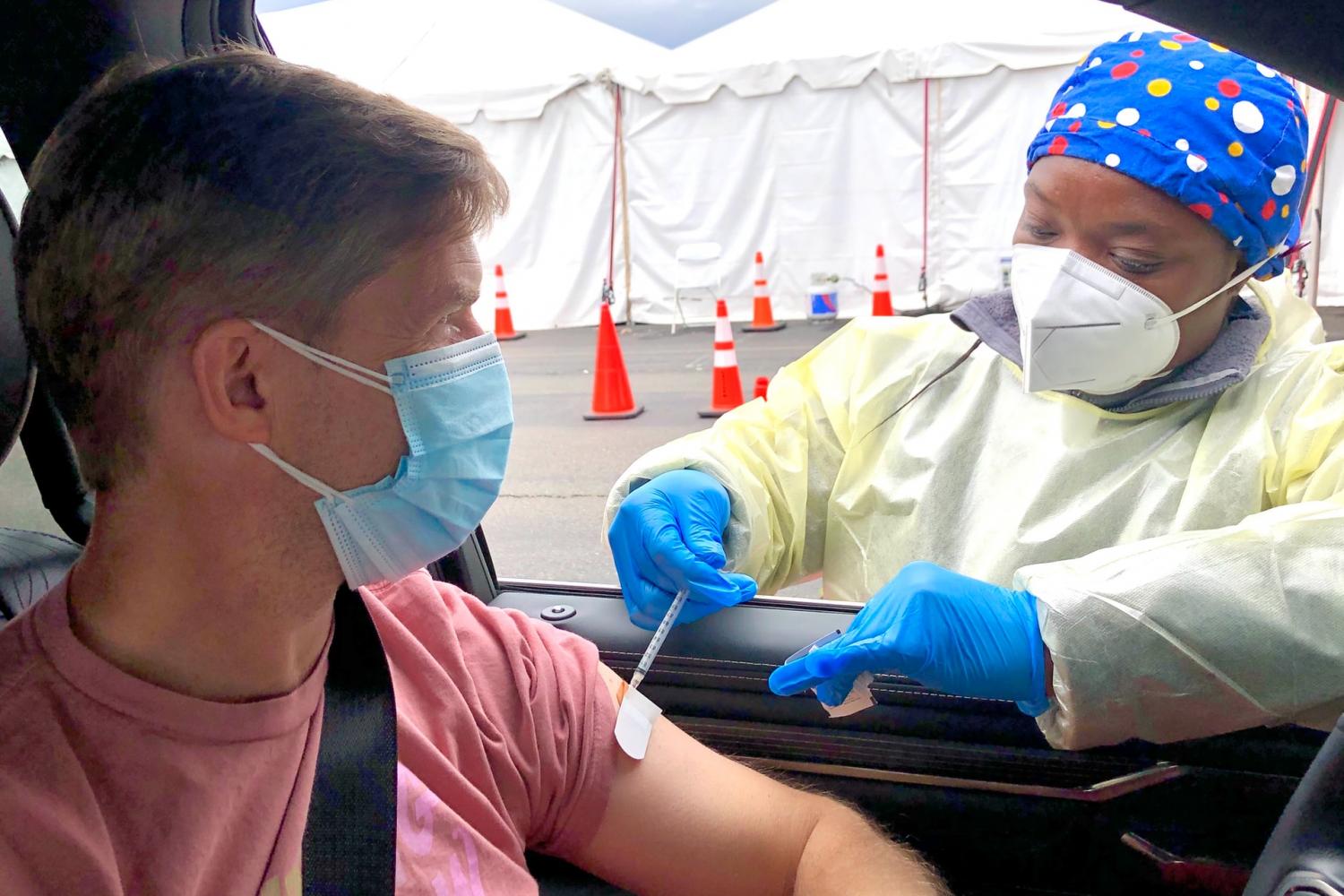
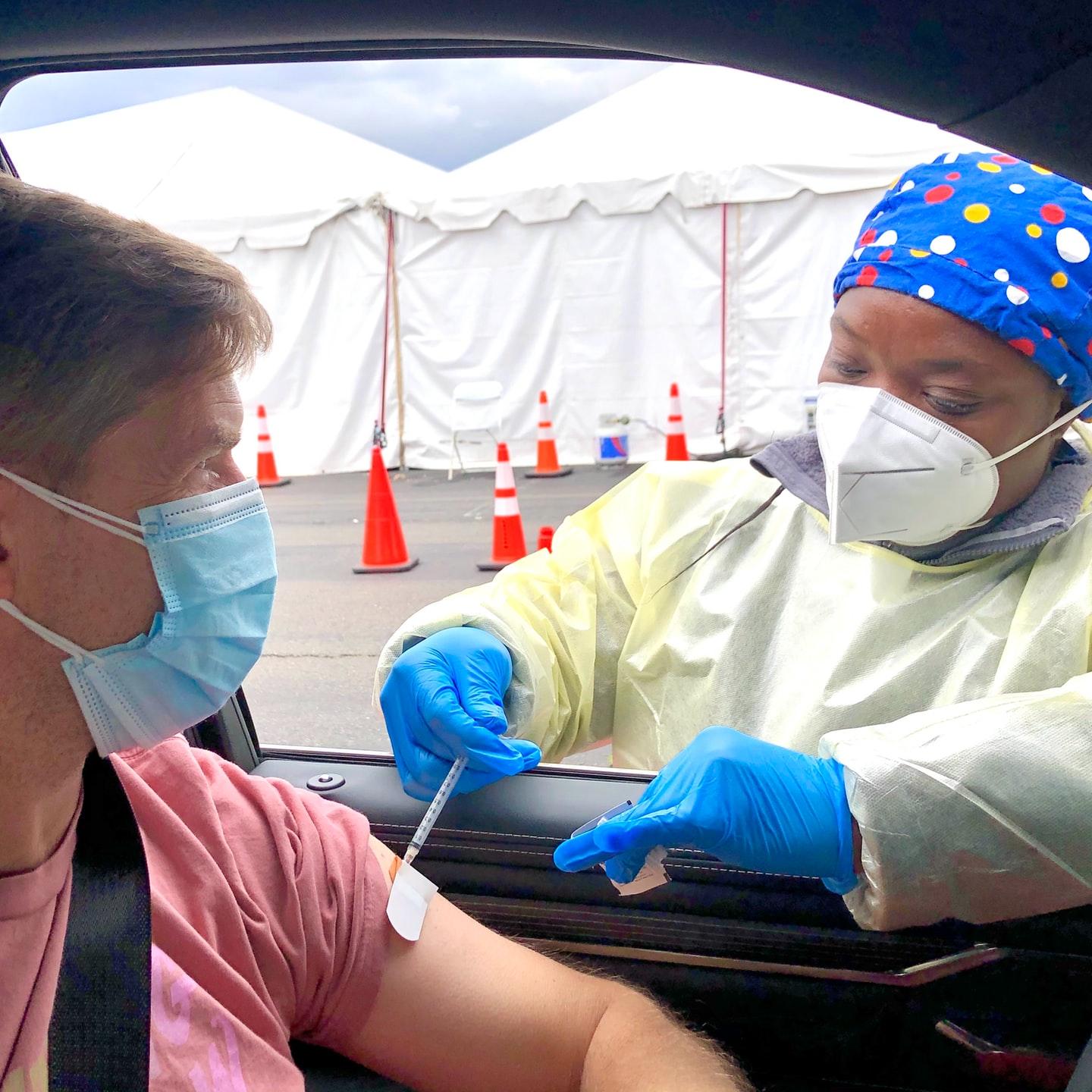
In this day and age of worker shortages, it seems that many employers have gone the extra mile to tolerate employees and prospective hires who refuse to get vaccinated against COVID-19. Fortunately, an equal and opposite movement is beginning to materialize around protecting workers, customers and clients. The healthcare industry could become a leading driver of the movement to establish vaccine mandates, and some institutions are already heeding the call.
Vaccine mandates take hold
The Atlanta Journal-Constitution took note of the rising tide of vaccine mandates last week, conjecturing that “no vax, no service” could soon join the familiar “no shirt, no shoes, no service” poster common at many eateries and other small businesses, due to the risk of infection by ferocious new variants of the COVID-19 virus.
The problem is that millions of American workers and employers did their due diligence and got vaccinated, but still must deal with other workers, customers and clients carrying the virus. The vaccine still protects against serious illness and death, but a positive test can spark expensive, disruptive waves of quarantine and testing throughout a company. It can become especially burdensome on small businesses, which may need to shut down completely while taking steps to contain an outbreak among employees.
The healthcare industry’s support is needed on vaccine mandates
So far, any strong movement in support of vaccine mandates has yet to gather steam. Despite the rising tide of death and long term illness, the anti-vaccination movement is still being stoked to a boil by Tucker Carlson of Fox News, among others in the media. Small business owners who impose a vaccine mandate are exposed to backlash from their community, unless larger companies step up to promote universal vaccination and help create a culture of community protection.
Editor's note: Be sure to subscribe to our Brands Taking Stands newsletter, which comes out every Wednesday.
Krispy Kreme provides a good example of the creative ways in which companies can offer a vaccine carrot, but their efforts seem to have mainly rewarded those already inclined to get vaccinated. They have barely put a dent in the anti-vaccination movement.
Now it appears that the time for a stick has come. AJC reporter Ligaya Figueras profiled one Atlanta restaurant and bar co-owner who explained that his decision to impose a vaccine mandate on both employees and customers was a quality of life and safety issue. He also pleaded for support from the healthcare industry.
That support may finally be forthcoming. In a twist of irony, a significant number of healthcare workers are still unvaccinated, putting medical institutions and companies at risk along with clients, students, patients, visitors, and volunteers. The industry is finally beginning to put its foot down.
Earlier this week, dozens of leading healthcare organizations and professional associations signed a statement making the ethical case for universal vaccination among healthcare workers.
“Due to the recent COVID-19 surge and the availability of safe and effective vaccines, our healthcare organizations and societies advocate that all healthcare and long-term care employers require their workers to receive the COVID-19 vaccine,” they wrote. “This is the logical fulfillment of the ethical commitment of all healthcare workers to put patients as well as residents of long-term care facilities first and take all steps necessary to ensure their health and well-being.”
The statement also emphasized the need for leadership by the healthcare industry, arguing that “we hope all other employers across the country will follow our lead and implement effective policies to encourage vaccination. The health and safety of U.S. workers, families, communities, and the nation depends on it.”
Political leaders now stepping in
The vaccine mandate movement is already gathering steam, at least among institutional-type healthcare organizations. Last week, Becker’s Hospital Review published a long list of hospitals, medical facilities and healthcare systems issuing COVID-19 vaccine mandates for employees, students, vendors and volunteers.
The missing piece is political. That is a prickly subject, considering the linkage between the anti-vaccination movement, the Republican Party and the failed insurrection of January 6.
That area is also quickly approaching a tipping point. The Department of Veterans Affairs (VA) was among those included in the Becker’s list, having issued a vaccine mandate for all staff and medical employees at its facilities earlier this week.
The VA’s decision follows the Department of the Army’s plans for introducing mandatory vaccination in this fall, in consideration of widespread vaccine refusal among soldiers. That could set the stage for widespread mandates across the entire Department of Defense and other critical federal agencies, as well as state and level law enforcement agencies where vaccine rates also lag.
On the state level, California Governor Gavin Newsom has taken the lead and has bet his political future on mandatory vaccination.
Though facing the threat of a recall election, Newsom issued a detailed statement on July 26 imposing a wide-ranging vaccine mandate that covers all state employees as well as all healthcare workers in the state, plus workers in nursing homes and other high-risk residences.
Employers need to step up for vaccinated workers
In an interesting strategic decision, Newsom’s vaccine mandate provides unvaccinated workers with the alternative of submitting to weekly COVID-19 tests.
That underscores a point of contention for vaccinated workers. After all, those who are vaccinated expect to realize the rewards of vaccine, both in terms of disease prevention and in the ability to go about one’s work without the inconvenience of wearing a mask and other restrictions.
Now the vaccinated are exposed to new risks and a new imposition of mask mandates and other restrictions, largely on account of obstinate vaccine refusal by others. It is only fair to require the unvaccinated to take steps that help promote worker and customer safety by submitting to regular tests.
The whole situation should put employers on alert, not only in the healthcare industry but across the entire U.S. workforce.
Many employers have hesitated to impose vaccine mandates, most likely for fear of alienating vaccine-refusing employees, recruits, customers or the community at large. Now they have to deal with the consequences of a worker-friendly job market, in which vaccinated workers and job seekers are motivated to pick and choose among employment options that offer the safety, convenience and just plain fairness of a vaccine mandate.
Healthcare industry observers have already sensed that a tipping point is coming. Employers who act now can get ahead of the curve and help accelerate the vaccine mandate movement.
Image credit: Alex Mecl/Unsplash
The Pandemic Has Hit Gen X Hard. Why Are Companies Overlooking This Pipeline of Talent?


While companies (and the public relations agencies promoting them) are once again ramping up their communications on how they can appeal to current and potential millennial and Gen Z employees, Gen X has been taking it on the chin, and being hit hard, over the past 18 months.
A recent report from Generation, a nonprofit that works with educators and employers to expand access to job opportunities while taking on youth unemployment, suggests that workers aged 45 to 60 worldwide have felt the harshest effects of COVID-19’s impact on the global economy. They may not feel their careers are ready to sunset, but the message they are getting from employers is that dusk has long passed on their job prospects.
Generation surveyed around 3,800 people across seven countries, ages 18 to 60, along with close to 1,500 hiring managers during the spring. The findings aren’t pretty for the generation that was rocked by the early 1990s recession, got hit again by the double-whammy of the dot-com bubble burst and 9/11, and then found themselves reeling yet again during the home foreclosure fiasco and global financial crisis of 2008-2009. Now, as they feel the pressure to save for retirement, much of this news will come across as grim and grimmer.
Editor's note: Be sure to subscribe to our Brands Taking Stands newsletter, which comes out every Wednesday.
“In every country we surveyed, the experience of looking for work is harder for 45+ individuals than other age groups, and they typically find themselves unemployed significantly longer than those who are younger,” the study’s authors wrote.
As anyone over the age of 40 can tell you, finding that next job feels like being stuck on the proverbial hamster wheel. Never mind the fact that in 2021, if someone in their 40s is in good health, they still have a good 25 to even 35 working years left in them. Still, getting the time of day from a human resources professional, recruiter or hiring manager is often challenging.
More than 70 percent of workers 45 and older who participated in the survey felt their age factored against them when it came time to find a new job.
And no wonder: When the 45-plus crowd was compared to those 18 to 34 and 35 to 44, Generation’s survey of hiring managers found results, or shall we say an attitude, that blares two words no one wants to hear: age discrimination. Compared to the two younger age groups, Gen X is viewed as less prepared, less experienced and less fit for the jobs that companies are currently posting.
In fairness, each generation faces challenges, and some hurdles that workers of any age may perceive can come from within: For example, almost 60 percent of the Gen X crowd who Generation surveyed said they were resistant to new training. Nevertheless, that still leaves more than 40 percent who are eager to start afresh. Further, some of that resistance could come from the reality that they are either unaware of, or believe they are not eligible for, such training. Government incentives could offer a lift, especially when considering any subsidies allotted for the hiring of reskilled workers will eventually be paid back, and more, by future income taxes.
Among the countries featured in Generation’s research, Singapore, Italy, Spain, the United Kingdom and India were home to hiring managers who, at a rate of at least 40 percent, said subsidized wages of some sort would encourage them to review their hiring practices. Hiring managers in the two other countries in the study, the U.S. and Brazil, were far less open to such a suggestion, which suggests entrenched attitudes will be hard to overcome if Gen X workers are to feel they have a stake and are valued in today’s economy.
“Hearing employers that have hired job-seekers aged 45 and above say that those workers tend to outperform their younger counterparts is encouraging, but also accentuates the tragedy of today’s employment landscape,” Generation's CEO Mona Mourshed said in a public statement. “We hope this new research spurs governments and employers alike to take steps to counter rampant ageism and to include this forgotten age-group in their recovery efforts.”
Generation suggests a complete rethink coming from both the private and public sectors is necessary for improving the long-term job prospects of Gen X. To start, the report’s authors suggest improved government statistics with narrower age brackets in order to shine more light on the job struggles the 45-and-over crowd find. Further, organizations can do more to link training programs directly to new job opportunities, and even provide financial assistance, to Gen X workers who might be skittish to take on new training courses. Finally, companies can reset their hiring practices and find ways to transition current employees who happen to be 45 into new roles, instead of the conventional approach, which has been to simply recruit new hires.
Image credit: Jamie Street/Unsplash
Mercedes-Benz Crowds Into EV Territory with Help from Shell
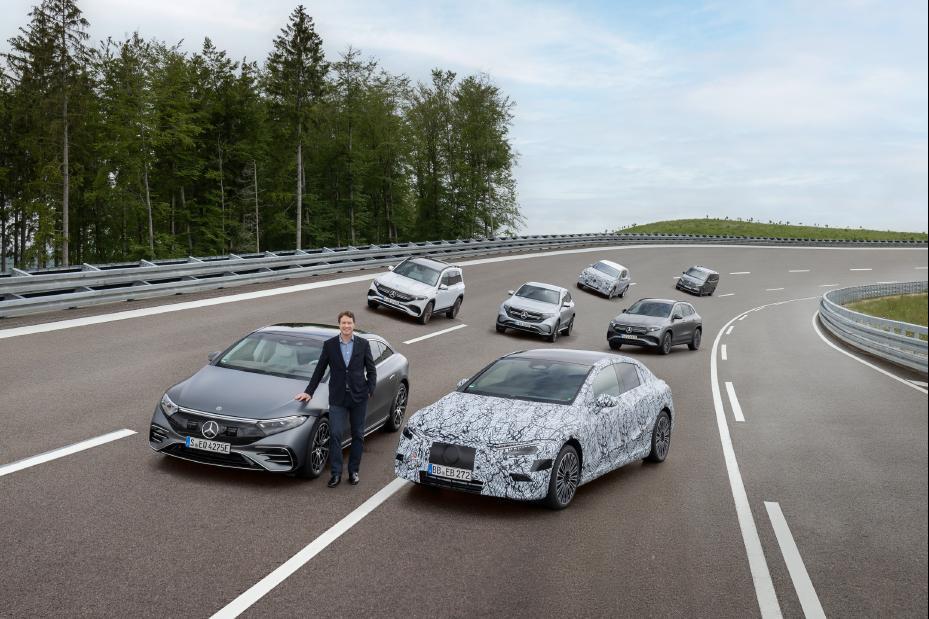
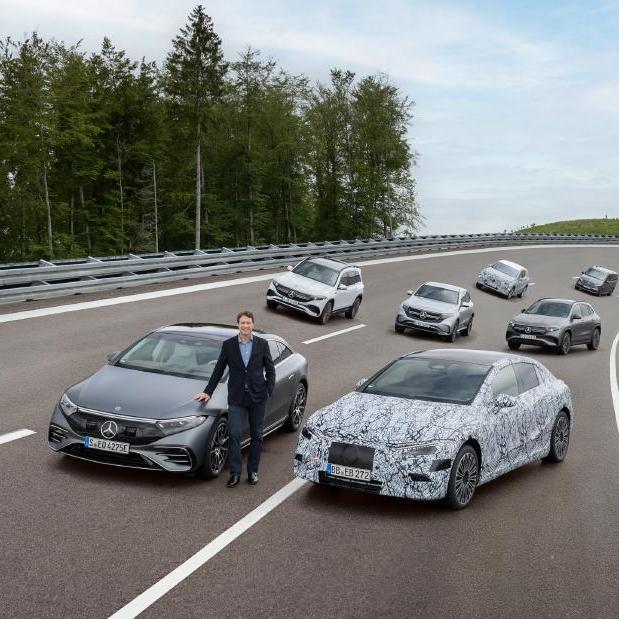
Mercedes-Benz sent a ripple of excitement shooting through the internet last week when it announced plans for a rapid transition into the electric vehicle (EV) field. Part of the package is an ambitious ramping-up of the automaker’s charging station network, through a partnership with the legacy oil and gas firm Shell, and that’s where things get interesting.
Mercedes-Benz enlists Shell for rapid electric vehicle adoption
The U.S. startup Tesla burst ahead of the electric vehicle pack early on, with an exclusively electric lineup and its own network of charging stations. Meanwhile, conventional automakers like Germany’s Mercedes-Benz (owned by Daimler AG) have been engaged in a grindingly slow pivot to electrification while keeping their gas and diesel operations afloat.
The pace of electrification has picked up considerably in the past year, but that can be a two-edged sword. With a sudden flood of EV drivers heading for the road, competition to book space at public charging stations could result in long wait times, anxious drivers and depleted batteries.
In addition, demand for charging during peak electricity use hours could weaken the stability and reliability of local grids.
Like other automakers, Mercedes-Benz is solving part of the issue by introducing new battery technology that charges more quickly and goes farther on a single charge.
Last week’s electrification announcement also included a focus on increasing the number of charging stations, and that’s where the Shell Recharge network of EV charging stations comes in.
Recharge may come as a surprise to those familiar with Shell’s deep roots in the oil and gas business. However, in recent years Shell has made a series of significant moves into electrification. They includes investments in wind power, solar power and hydrogen fuel stations. The company is also beginning to embrace the green hydrogen market.
Electric vehicle charging for grid stability
Shell launched the Recharge network in California with an eye on accelerating EV adoption in that state.
As a public charging network, Recharge involves commercial, retail, public and government locations, and multi-family residential buildings.
To help build grid stability into the system, Shell also added a new smart-charging feature called RechargePlus.
The Plus feature encourages EV drivers to charge their batteries during times that benefit local grid operations. That would generally be at night and other periods of low demand, when electricity rates are also lower. The driver can save money on EV charging and contribute to a more reliable grid at the same time.
EV charging and brand loyalty
As would be expected for a luxury brand, Mercedes-Benz is also planning to add notes of exclusivity and convenience into the simple act of charging an electric vehicle battery.
One aspect of that plan is a hint that Mercedes-Benz drivers will get extra consideration for booking a charging station.
“Customers will get enhanced access to Shell's Recharge network consisting of over 30,000 charge points by 2025 in Europe, China, and North America – including over 10,000 high-power chargers globally,” Mercedes-Benz explained.
Mercedes-Benz is also leveraging its existing network of more than 530,000 charging stations worldwide. Later this year, the company will introduce its new “Plug & Charge” service, which will eliminate the authentication and payment steps normally needed to use a charging station.
Future plans also include luxury-style pampering.
“Mercedes-Benz is also planning to launch several premium-charging sites in Europe, which will offer a bespoke charging experience with top-notch facilities,” the company explains.
New life for legacy brands
Shell has a long way to go in order to undo the damage of years past. However, the new partnership with Mercedes-Benz demonstrates how the global auto industry can stimulate and accelerate sustainable investment by fossil energy stakeholders.
Manufacturers in other sectors can also play a role. Lego, for example, has embarked on the technologically challenging journey of transitioning to recycled plastic and other more sustainable sources for its iconic bricks. That aim could end up dovetailing with Shell’s plastic recycling R&D work.
In an interesting twist, back in 2014 Lego was targeted by Greenpeace for including a Shell-branded gas station within its long roster of specialty kits. Lego pledged to remove the kit, which was somewhat ironic considering Lego’s longstanding reliance on fossil resources to make its bricks.
For that matter, the pledge did not involve breaking Lego’s existing contract with Shell, which apparently is still in force. Shell-branded Lego gas station kits for sale can still be found online at Walmart, for example.
Shell has many other brand affiliations in its lineup, some of which have expired in recent years. That includes Shell and Mercedes-Benz gasoline tanker truck toys.
Perhaps the time is right for the two companies to partner with Lego on a Shell-branded electric vehicle charging station kit featuring the forthcoming Mercedes-Benz all-electric Vision EQXX, scheduled to be premiered next year.
The EQXX has stirred up quite a buzz in the automotive world for its claim to a range of more than 621 miles per charge. That should help relieve pressure on public charging station demand, and Mercedes-Benz is already working on plans to adapt the Vision EQXX architecture in other new electric vehicles.
Image credit: Mercedes-Benz USA corporate site
Sunscreen on Grapes? This Crop Is the Climate Change Canary in the Coal Mine


As anyone who’s visited any wine country, whether in Northern California, the Pacific Northwest, France or elsewhere knows, the various microclimates in these regions are crucial for the production of some of the most popular wine varietals on the market. Climate change is already affecting some of the more sensitive types of grapes worldwide. In a few years, the lucky ones will say they were only “affected,” as a warming planet could devastate many vineyards this decade.
Reality is hitting many vineyards now. This summer, fierce summer heat has been doing a number on grape growers worldwide. The crisis slamming these growers and the wider wine industry comes in the wake of a 2019 study, which analyzed grape harvests over the past seven centuries and found that global warming has accelerated over the past 30 years.
That revelation might offer some good news for future aspiring winemakers in regions like Canada, Britain, Scandinavia and the upper Midwest, but for long entrenched wine production leaders in France, Italy and Spain, the effects could be devastating. An earlier growing season, for example, also puts vineyards at higher risk of frost – as in what occurred in France and Italy earlier this year. Some regions have witnessed growers already responding: Growers in Sicily, for example, have transitioned from grapes to raising avocados.
The outlook for this industry looks bleak. If climate change risks go unchecked, more than half of the world’s wine growing regions could be lost by mid-century. That might not sound so serious if wine isn’t your indulgence of choice – but with the disappearance of those vineyards will come the loss of jobs and a body blow to local economies that are dependent on this popular niche of tourism.
The news is not all bleak: One recent study has suggested that diversifying the types of grapes grown in vineyards could mitigate some of this risk. Nevertheless, just as no one could have predicted searing summer heat in the Pacific Northwest while the U.S. Midwest was pummeled by flooding, no can predict the outlook for wine growing regions over the next several years. The bottom line is that the outlook for the industry is nothing to clink your glasses over.
When a global insurance company points out that wine grapes are among the most sensitive crops to climate change, it’s clear the concerns go far beyond someone’s favorite varietal or preferred vintner.
Meanwhile, grape growers in Napa, Sonoma and nearby areas in California have to respond to the crisis now, as they currently don’t have time to focus on what will become of their land in five, 10 or 20 years. The most desperate are turning to “water witches,” (who engage in a longtime practice known as “water divining” in Australia) to find new sources of this most precious resource. And in recent weeks, as the thermometer hit 100F and above, other grape growers sprayed sunscreen on their grapes in an effort to make sure they can make it to harvest season, as this recent New York Times story profiled.
The financial impacts are already mounting. In an area already hit hard by catastrophic wildfires, Northern California vineyards are facing another huge challenge to their livelihoods – insurance costs that are skyrocketing, that is, if they can even secure property insurance in the first place.
At first glance, it may appear to be a stretch to compare the wine industry to other segments within the global agriculture sector – that is, farmers who actually grow food crops that feed much of the world. But the crisis that grape growers worldwide have confronted the past several years presents a test case for a sector that will be tasked with feeding as many as 10 billion people by 2050. How these growers are responding now, and what happens to their land over the next several years, will offer a template for how other farmers will be forced to pivot during the coming decades.
Image credit: Nacho Domínguez Argenta/Unsplash